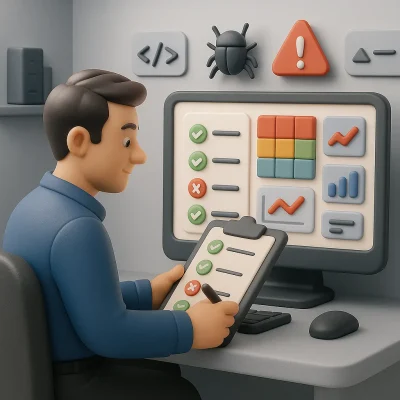Risk-Based Testing Focus
Sumit J.
June 26, 2025

In today’s fast-paced software development world, testing everything is ideal — but rarely realistic. With shrinking timelines, limited resources, and increasing complexity, QA teams must work smarter, not just harder. That’s where Risk-Based Testing (RBT) comes in.
RBT is a strategic testing approach that helps teams prioritise their efforts on the most business-critical and failure-prone areas of an application. Instead of treating all test cases equally, it focuses your attention on where bugs could cause the most damage, whether to users, revenue, or reputation.
When done right, Risk-Based Testing doesn’t just reduce risk — it becomes a key part of delivering high-quality software under real-world constraints.
What is Risk-Based Testing?
Risk-based testing is a strategy that prioritises testing efforts based on the likelihood and impact of potential failures. Instead of treating all features equally, RBT identifies high-risk areas — where defects could cause the most damage — and allocates more testing resources to them.
Key Principles of Risk-Based Testing:
- Risk Identification: Determine what could go wrong in the system.
- Risk Assessment: Evaluate the probability and severity of failure.
- Risk Mitigation: Allocate testing efforts to minimise high risks.
- Continuous Monitoring: Adjust testing focus as risks evolve.
Why Use Risk-Based Testing?
- Efficient Resource Allocation: Focuses testing on critical areas, saving time and effort.
- Early Detection of Major Issues: Catches high-impact defects before they reach production.
- Better Stakeholder Confidence: Demonstrates that the most significant risks are under control.
- Adaptability: Adjusts to changing project priorities and emerging risks.
When to Use Risk-Based Testing
Use RBT in situations like:
- Projects with tight deadlines
- Systems with complex business logic
- New releases with many features
- Apps dealing with sensitive data or financial transactions
- When full test coverage is not possible
How to Implement Risk-Based Testing
1. Identify Risks
Work with developers, business analysts, and stakeholders to list potential risks. Think about:
Functional Risks (core features failing)
These risks occur when software features or functions fail to meet the requirements.
Example:
In an e-commerce app, the “Apply Coupon” button doesn’t apply the discount even when the coupon is valid.
- Impact: Customer frustration, cart abandonment, revenue loss.
Technical Risks (performance, security issues)
These risks stem from technical limitations, poor design, or infrastructure issues.
Example:
The app uses a third-party payment gateway that becomes unavailable during peak sales hours.
- Impact: Payment failures, order loss, negative reviews.
Business Risks (compliance violations, revenue loss)
These risks affect company objectives, reputation, or legal compliance.
Example:
A promotion gives free delivery on all orders, but no minimum order value is set. Users order ₹30 items with ₹100 delivery cost waived.
- Impact: Operational loss, delivery partner cost issues.
2. Assess Risks (Probability × Impact)
Rate each risk based on:
- Probability (How likely is failure?)
- Impact (How severe would failure be?)
3. Prioritise Test Cases
- Focus more effort on testing features with the highest risk scores.
- Automate where possible and allocate more resources to critical areas.
4. Execute & Monitor
- Test high-risk areas first.
- Adjust priorities dynamically.
- Track with metrics (defect density, coverage).
Examples of Risk-Based Testing
E-commerce App
- High Risk: Payment gateway, order placement, coupon application
- Medium Risk: Product filtering, cart sync
- Low Risk: Profile picture update, theme selection
Banking App
- High Risk: Money transfer, login security, OTP verification
- Medium Risk: Account statement, transaction history
- Low Risk: Theme switching, user bio update
How to Pay Attention in Risk-Based Testing (RBT) Focus on:
To pay attention in Risk-Based Testing (RBT), focus on identifying which areas of the application are most critical to the business and most likely to fail. Collaborate with developers, product owners, and stakeholders to understand key functionalities, past issues, and user impact.
Use a simple risk matrix (Likelihood × Impact) to score and prioritise. Regularly revisit risks as the project evolves. Staying alert to changing priorities and feedback helps ensure you’re always testing what matters most.
Conclusion
Risk-Based Testing is not just a testing strategy — it’s a smart way to align testing with business goals and user impact. By focusing on what matters most, testers can add the maximum value in the shortest amount of time.
